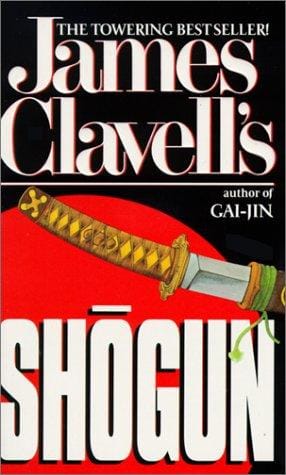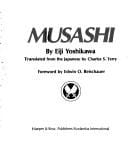Shogun: History, Power and Legacy of Japan’s Military Rulers
Explore the rise, rule and legacy of Japan’s shoguns—from Kamakura warriors to Tokugawa statesmen—and see how their influence still shapes culture today.

What Is a Shogun?
Few titles in world history evoke as much intrigue as “Shogun,” the supreme military commander who, for almost 700 years, directed Japan’s armies, dictated policy, and often eclipsed the ceremonial authority of the emperor. Derived from the term Sei-i Taishōgun—“barbarian-subduing generalissimo”—the office was at once political and martial, blending sword-edge pragmatism with ritual legitimacy. Understanding the shogun is key to grasping how medieval and early-modern Japan transformed from a patchwork of warring clans into a unified, highly stratified society guided by the ethos of the samurai.
The Birth of the Shogunate
The shogunate emerged during the late Heian period, when imperial court politics grew paralyzed by factionalism and distant provinces simmered with rebellion. In 1192, Minamoto no Yoritomo received the first official shogunal title after defeating rival Taira forces in the Genpei War. By establishing his headquarters in Kamakura, far from Kyoto’s aristocratic intrigues, Yoritomo created a parallel seat of power that fused military oversight with land stewardship. Samurai vassals pledged loyalty in exchange for estates, inaugurating a feudal system that balanced local autonomy with centralized command—an arrangement replicated by later shoguns.
The Kamakura and Ashikaga Eras
The Kamakura shogunate (1192–1333) laid foundational institutions such as the shugo (military governors) and jitō (land stewards) while repelling two Mongol invasions. Yet internal disputes and imperial loyalist uprisings eventually splintered its authority. The Ashikaga, or Muromachi, shogunate followed in 1338, relocating power back to Kyoto and patronizing Zen Buddhism, ink painting, and Noh theater. Unlike their predecessors, Ashikaga shoguns ruled through a looser web of alliances, which slowly unraveled during the devastating Ōnin War (1467–1477). The resulting “Age of Warring States” (Sengoku Jidai) plunged Japan into a century of endemic conflict—but also sharpened administrative techniques later perfected by the Tokugawa.
The Tokugawa Shogunate: 250 Years of Stability
Tokugawa Ieyasu’s victory at the Battle of Sekigahara in 1600 and his appointment as shogun three years later ended the Sengoku chaos. Ruling from Edo (modern Tokyo), the Tokugawa clan engineered a remarkably durable system known as bakuhan taisei, a dual governance model in which the shogunate (bakufu) coexisted with semi-autonomous domains (han). Through policies such as alternate attendance (sankin-kōtai), strict class hierarchies, and regulated foreign trade confined to Nagasaki, the Tokugawa ensured feudal lords remained loyal and financially dependent. For more than two centuries, Japan enjoyed internal peace, agricultural expansion, and vibrant urban culture, from Kabuki theater to colorful Ukiyo-e woodblock prints.
Government, Society, and the Samurai Code
Although popularly imagined as solitary warriors, samurai functioned as bureaucrats, tax collectors, and moral exemplars within the shogunal administration. Their lives were governed by bushidō, an evolving code emphasizing loyalty, frugality, and martial honor. Below them stood peasants, artisans, and merchants, each confined to legal categories that shaped dress, residence, and occupation. The rigid order fostered stability but also economic innovation: merchant houses in Osaka revolutionized rice futures trading, and castle towns grew into proto-industrial centers. Shogunal law, recorded in edicts like the “Buke Shohatto,” regulated everything from weapons ownership to theater scripts, underscoring how military rule permeated daily life.
Cultural Contributions and Lasting Influence
Shoguns were not merely warlords; they were tastemakers who commissioned temples, tea gardens, and literary works that still symbolize Japanese aesthetics. Ashikaga Yoshimitsu sponsored the gleaming Kinkaku-ji (Golden Pavilion), while Tokugawa Tsunayoshi promoted Neo-Confucian ethics and animal protection laws. The discipline and minimalism cultivated under samurai patronage inform contemporary design, martial arts, and even corporate culture. Internationally, the mystique of the shogun fuels fascination with katana craftsmanship, Zen meditation, and strategic thinking, making the title a shorthand for decisive leadership in business literature and popular media alike.
The Fall of the Shogun and the Meiji Restoration
By the mid-19th century, foreign gunboats and unequal treaties exposed the Tokugawa regime’s inability to safeguard national sovereignty. Reformist domains in Satsuma and Chōshū rallied under the slogan “Revere the Emperor, Expel the Barbarians,” leveraging imperial symbolism to delegitimize the shogun. In 1867, Tokugawa Yoshinobu relinquished power, ending Japan’s last shogunate. The subsequent Meiji Restoration centralized rule under the emperor, abolished the samurai class, and launched rapid industrialization. Yet the administrative blueprint left by the shoguns—cadastral surveys, road networks, and a meritocratic ethos—facilitated Japan’s transformation into a modern nation-state.
Shogun in Modern Media and Travel
Today, the word “Shogun” resonates far beyond textbooks. James Clavell’s bestselling novel and its television adaptations introduced global audiences to feudal intrigue, while video games like Total War: Shogun 2 let players reenact historic battles. Travelers can walk the Nakasendō highway, explore Edo Castle’s moats, or attend reenactments at the annual Sekigahara Festival. Museums in Kamakura and Nikko showcase samurai armor and Tokugawa mausoleums, offering tangible links to the era. Whether experienced on screen or on foot, the legacy of the shogun continues to shape how the world imagines—and experiences—Japan.
